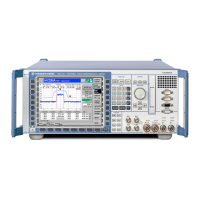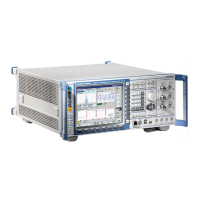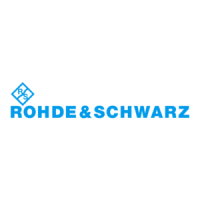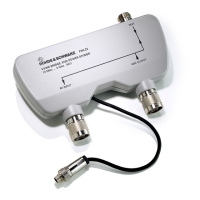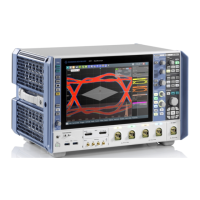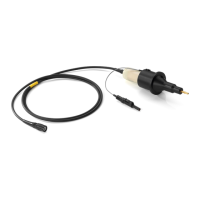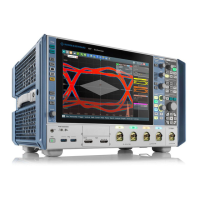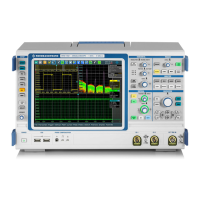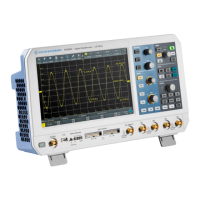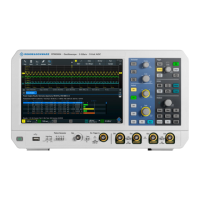R&S CMU Instrument Design and Function Description
1100.4903.82 3.13 E-5
DIGITAL BOARD
The DIGITAL BOARD constitutes the central control and measurement board which contains all circuit
parts for conversion and further processing of the analog IF (receiver side) into digital I/Q values.
On the transmitter side, analog as well as digital I/Q values are modulated upon the carrier and provided
as analog IF.
Design
The DIGITAL BOARD is designed as HVC 200 plug-in module. The
HVC 200 cabinet is equipped with a screwed-on cover both at the front
and rear to ensure optimum electrical shielding of the module.
Cooling system
The casing is provided with ventilation holes on the right and left in
order to produce a large cooling flow through the module by means of
the instrument fan.
This efficient cooling is necessary, since a great number of highly
integrated fast digital devices is used on the module and up to eight
sandwich modules can additionally be fitted so that the board is
densely packed.
Control and supply
The control, bus lines and voltage supply of the DIGITAL BOARD are
effected via four 96-pin and one 48-pin FUTURE-bus connectors from
MOTHERBOARD1.
Function
As standard, the four sandwich boards ADC Module1, DDC Module1,
TXDSP Module1 and AUC Module1 are fitted.
On the DIGITAL BOARD, all necessary clocks are generated and
provided from the netclocks 1 and 2 in a clock conditioning and
distribution circuit. These clocks are required for sampling, filtering and
down converting the digital IF internally and for the UNIVERSAL
SIGNALLING UNIT MODULE.
Besides, two programmable logic devices (FPGA) are used on the
DIGITAL BOARD, which provide address decoding, interrupt control
and host interfaces between ISA bus and internal circuit parts
(DDC/TXDSP) as well as the control of the RF FRONTEND (via FEI
2
C-
Bus), the REFERENCE BOARD and AUDIO BOARD (via buffered ISA
bus) and the RXTX BOARD1 (via serial bus). Further serial interfaces
lead from the programmable logic devices to the UNIVERSAL
SIGNALLING UNIT1 and vice versa.
An AD converter on the DIGITAL BOARD is used for polling the
diagnostic voltages of the R&S CMU modules, which can indicate
module states and errors.
ADC MODULE1
The sandwich ADC MODULE1 is connected to the DIGITAL BOARD
via a multipoint connector. In addition, it is screwed to a solid ground
block to obtain a good ground connection.
The ADC MODULE1 receives the analog IF (10.7 MHz) from the RXTX
BOARD1 directly via a MMCX connector (IF3RX1) and converts it into
a 12-bit data stream by means of a fast AD converter.
DDC MODULE1
The sandwich DDC MODULE1 is directly plugged onto the DIGITAL
BOARD via three multipoint connectors and processes the digital data
stream of the receiver. In a special ASIC chip, the I/Q shaping, the
matching of the data rate and the respective filtering (bandwidth
shaping) of the digital data stream are produced. Then follows a DSP
(RX DSP) with further evaluation of the digital I/Q data for
measurement purposes. Besides, the digital I/Q data are passed on via
the MOTHERBOARD1 to the LINKHANDLER MODULE for evaluation.
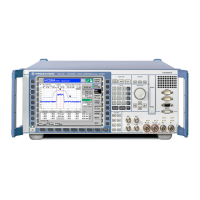
